If you were on Google yesterday, it's likely that you came across the Google Doodle that honoured Dr Wu Lien Teh, a Malayan who was nominated for the Nobel Prize for the mask he created to fight an epidemic.
Before the Google Doodle, many Malaysians weren't even aware that the mask created by Dr Wu led to the creation of the N95 mask that's so popular now.
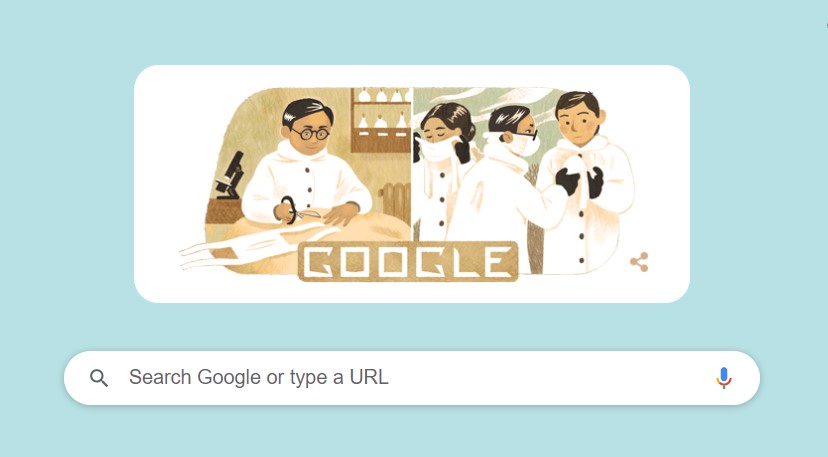
This got us thinking of what other inventions by Malaysians that we use on a daily basis that we didn't know or have forgotten were created (at least partially) by local talents.
Here are some that you may have not known about or forgotten about:
Let's start by talking more about Dr Wu, who was an epidemiologist born in Penang, Malaya in 1879.
The Dr was educated in the United Kingdom and was roped in to assist in dealing with bubonic plague in north-eastern China in December 1910.
There, he managed to isolate and culture the bacterium responsible for the disease. He also figured out that the disease was airborne so came up with masks made of cotton and gauze with extra layers of cloth, secured with strings.
Dr Wu encouraged medical practitioners and others to wear the masks to limit the spread of the disease.

Unsurprisingly, there were some resistance and one of his French colleague who refused to use the mask died during the plague, known as the Manchurian plague, which killed an estimated 60,000 people.
Dr Wu also recommended many of the same practices we are applying during COVID-19 such as movement control and isolation.
He became the first Malayan to be nominated for the Nobel Prize for his contribution. His mask design is believed to be the precursor of N95 mask, which was created by Taiwanese Peter Tsai in the 1990s.
Malaysia is largely safe from earthquakes except for some parts of Sabah, but managed to create a technology that keeps buildings and infrastructures safer when earthquakes happens.
In the 1970s, scientists from Malaysian Rubber Board (MRB), formerly known as the Rubber Research Institute of Malaysia (RRIM), worked with the University of California in Berkeley to develop and test seismic rubber bearings as base isolation for structures.
The rubber bearings would keep buildings from having direct contact with the ground, therefore any vibrations from the ground will not reach the infrastructure as the bearings would dampen it.
Think of it as the absorbers in your car, absorbing every hit your car takes when you drive over a pothole.

Countries such as Indonesia, China, Iran and Armenia have reportedly use this Malaysian technology on their buildings to earthquake proof them, so yeah, it works.
The second Penang Bridge also uses this technology and the Sabah state government has also said that all new buildings in Sabah will incorporate it after the devastating earthquake in the state in 2015 which took 18 lives.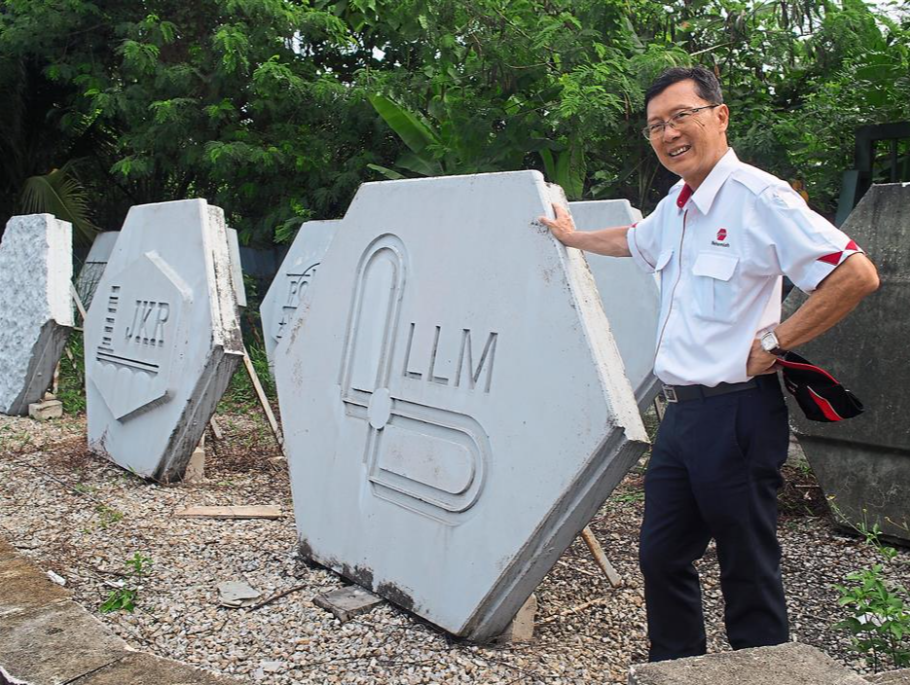
Even if you have never heard of Nehemiah Wall, we can assure you you would have seen them if you've driven on any of the highways in the country.
If you still do not know what it is, it's the hexagonal-shaped retaining walls that's probably most notable on the sides of flyovers.
The retaining walls that uses reinforced soil technology was created by Dr Nehemiah Lee Chee Hai, founder and chairman of Nehemiah Reinforced Soil Sdn Bhd.
Yes, you're right; both the invention and the company was named after the inventor!
Dr Nehemiah Lee was a civil engineer who saw a problem and enrolled into a PhD programme to find a solution to the problem. The result is the reinforced soil technology that's widely used in the country.
Pretty cool, huh?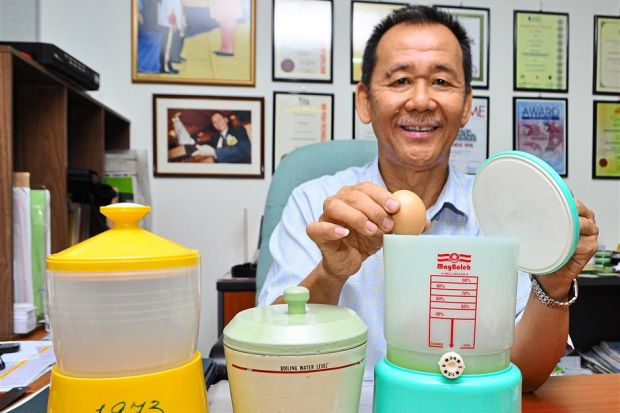
Anyone who's ever been to a kopitiam would have seen the yellow plastic egg maker, especially if you order half-boiled eggs.
The genius invention which saves you the hassle of having to time your egg cooking so you get the perfect half, soft or hard boiled eggs was the brain child of Datuk Hew Ah Kow.
It all started when Hew was working as a bulldozer operator in the jungles of Kelantan in 1973. He and his colleagues loved half-boiled eggs but often got distracted with work, ending up with overcooked eggs instead.
Being the youngest, Hew was often entrusted with the eggs and was challenged by older colleagues to come up with a way to make the perfect half-boiled eggs.
With pride at stake, Hew started experimenting using Ovaltin cans with different water measurements. His experiment took so much of time and effort that he and those around him started to get sick of eating eggs!

Hew didn't give up, though. He eventually found the secret to making the perfect half-boiled egg. One day, a salesman who got stuck with the crew due to rain offered to buy Hew's invention.
He was paid RM7,000 for it and the salesman proceeded to sell the idea to a company that used to technology to make the egg makers we see in market today.
The egg maker isn't Hew's only creation. Once he realised how successful his invention can be, he decided to work on more innovations including natural mosquito repellent, toothbrush with an built-in tongue scraper, a palm oil fruit bunch cutter and a clothes hanger with clips for high-rise homes.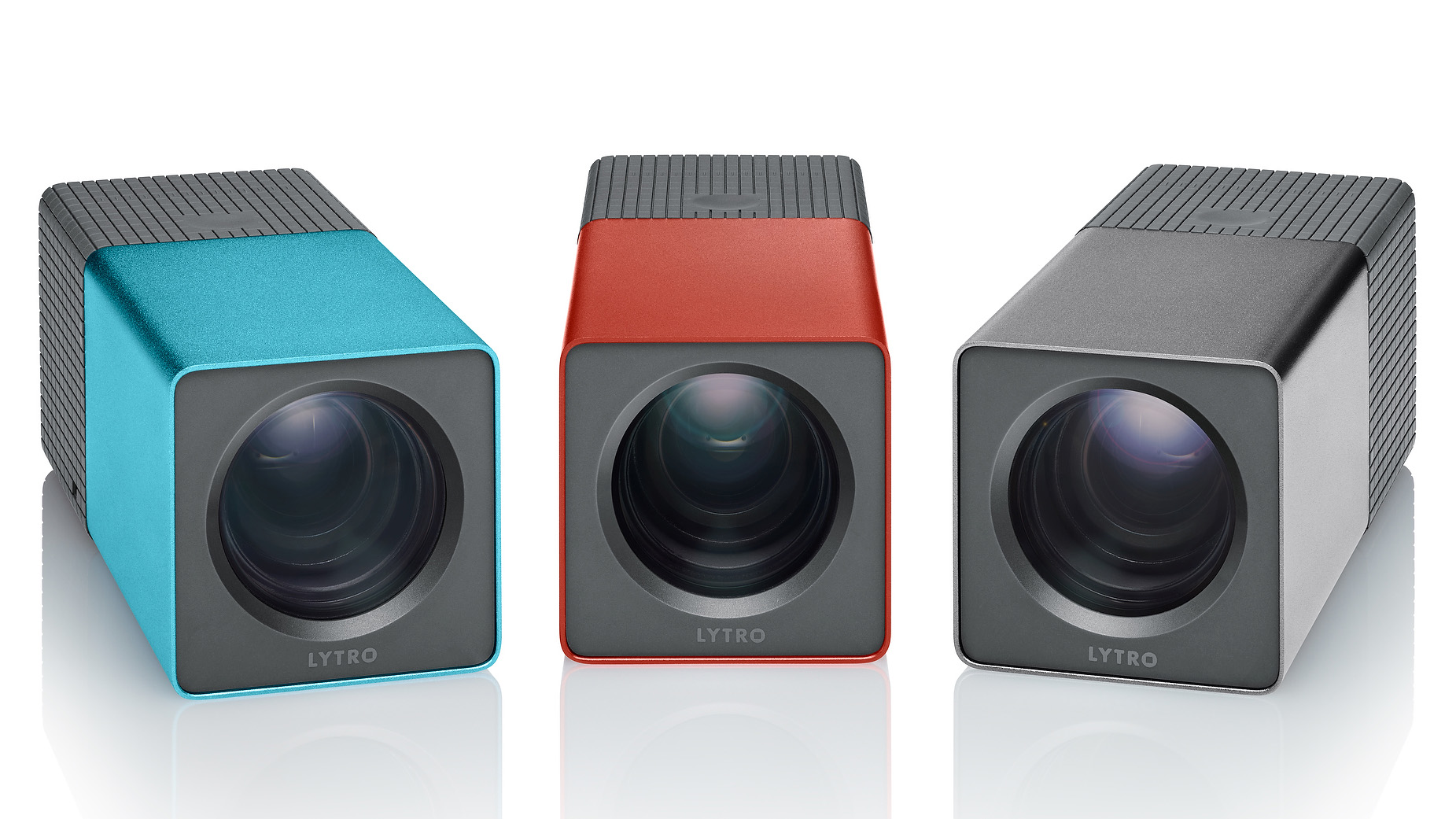
Sadly, Lytro closed its doors in 2018 as a part of its deal with Google but it was a pretty cool invention nevertheless.
The company came up with light-field camera which worked somewhat like your regular cameras but with the additional ability to change the focus after an image is captured.
The camera captures images "live" so when you can later adjust the focus of the image later on. We've never seen the camera ourselves, but we assume it's similar to the "live" photos you can take on iPhones which you can later edit.
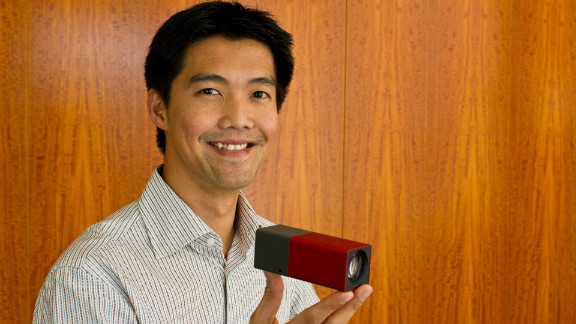
Lytro was owned by Ren Ng, who was born in Malaysia but migrated to Australia when he was only nine.
Guess our education system can't be credited to his success, but as usual, we take pride in the success of anyone with even an inkling of ties to Malaysia!
Ren Ng now lives in the United States and works as assistant professor in the Department of Electrical Engineering and Computer Sciences at the University of California, Berkeley.
Before there was such a thing as cloud, most of us used to use pen drive to save all our files. Those tiny but powerful things could store large amount of files and came in handy when we had to do our assignments in college.
Although there are some disputes to this claim, it is believed that Phison CEO and co-founder Datuk Pua Khein-Seng and team were the first to come up with pendrives or flash controllers.
The team, comprising of two Malaysians, two Taiwanese and one from Macau, the team came up with the technology although Pua's name is the one often associated with it.

Pua studied at National Chiao Tung University (NCTU) in Taiwan and wanted to return to Malaysia to work in a Taiwanese or Japanese company based here.
However, fate intervened and he met his business partners while he was doing his research and the rest, they say, is history.
Once upon a time, it used to take at least a week for rubber stamps to be ready but thanks to Robest Yong, you can get it within a day now.
In fact, according to Yong's blog, it only takes five minutes to make one.
Back in the day, Yong was curious why something as simple as rubber stamps took so long to make, so he asked a shop owner to show him how it's done to make sense of the timeline.
This started his quest to come up with a better technology, which is when he came across a printing technology in Japan that uses photo-polymer. He later realised that this method did not work for him so he went to Japan again to figure out what could.
.jpg)
He found what he needed there. Instead of using natural rubber, Yong used polyclone, a type of transparent polymer that looks like transparent rubber.
Now, the device is so common that nobody even think about the times it took weeks for rubber stamps to be ready, let alone who made it possible for the process to become so much faster.
Wow! We have such great talents in Malaysia. Let's hope we see more young people coming up with innovations that'll change the world.
Before the Google Doodle, many Malaysians weren't even aware that the mask created by Dr Wu led to the creation of the N95 mask that's so popular now.

This got us thinking of what other inventions by Malaysians that we use on a daily basis that we didn't know or have forgotten were created (at least partially) by local talents.
Here are some that you may have not known about or forgotten about:
#1 Face masks

Let's start by talking more about Dr Wu, who was an epidemiologist born in Penang, Malaya in 1879.
The Dr was educated in the United Kingdom and was roped in to assist in dealing with bubonic plague in north-eastern China in December 1910.
There, he managed to isolate and culture the bacterium responsible for the disease. He also figured out that the disease was airborne so came up with masks made of cotton and gauze with extra layers of cloth, secured with strings.
Dr Wu encouraged medical practitioners and others to wear the masks to limit the spread of the disease.

Unsurprisingly, there were some resistance and one of his French colleague who refused to use the mask died during the plague, known as the Manchurian plague, which killed an estimated 60,000 people.
Dr Wu also recommended many of the same practices we are applying during COVID-19 such as movement control and isolation.
He became the first Malayan to be nominated for the Nobel Prize for his contribution. His mask design is believed to be the precursor of N95 mask, which was created by Taiwanese Peter Tsai in the 1990s.
#2 Earthquake isolator

Malaysia is largely safe from earthquakes except for some parts of Sabah, but managed to create a technology that keeps buildings and infrastructures safer when earthquakes happens.
In the 1970s, scientists from Malaysian Rubber Board (MRB), formerly known as the Rubber Research Institute of Malaysia (RRIM), worked with the University of California in Berkeley to develop and test seismic rubber bearings as base isolation for structures.
The rubber bearings would keep buildings from having direct contact with the ground, therefore any vibrations from the ground will not reach the infrastructure as the bearings would dampen it.
Think of it as the absorbers in your car, absorbing every hit your car takes when you drive over a pothole.

Countries such as Indonesia, China, Iran and Armenia have reportedly use this Malaysian technology on their buildings to earthquake proof them, so yeah, it works.
The second Penang Bridge also uses this technology and the Sabah state government has also said that all new buildings in Sabah will incorporate it after the devastating earthquake in the state in 2015 which took 18 lives.
#3 Nehemiah Wall

Even if you have never heard of Nehemiah Wall, we can assure you you would have seen them if you've driven on any of the highways in the country.
If you still do not know what it is, it's the hexagonal-shaped retaining walls that's probably most notable on the sides of flyovers.
The retaining walls that uses reinforced soil technology was created by Dr Nehemiah Lee Chee Hai, founder and chairman of Nehemiah Reinforced Soil Sdn Bhd.
Yes, you're right; both the invention and the company was named after the inventor!
Dr Nehemiah Lee was a civil engineer who saw a problem and enrolled into a PhD programme to find a solution to the problem. The result is the reinforced soil technology that's widely used in the country.
Pretty cool, huh?
#4 Automatic egg maker

Anyone who's ever been to a kopitiam would have seen the yellow plastic egg maker, especially if you order half-boiled eggs.
The genius invention which saves you the hassle of having to time your egg cooking so you get the perfect half, soft or hard boiled eggs was the brain child of Datuk Hew Ah Kow.
It all started when Hew was working as a bulldozer operator in the jungles of Kelantan in 1973. He and his colleagues loved half-boiled eggs but often got distracted with work, ending up with overcooked eggs instead.
Being the youngest, Hew was often entrusted with the eggs and was challenged by older colleagues to come up with a way to make the perfect half-boiled eggs.
With pride at stake, Hew started experimenting using Ovaltin cans with different water measurements. His experiment took so much of time and effort that he and those around him started to get sick of eating eggs!

Hew didn't give up, though. He eventually found the secret to making the perfect half-boiled egg. One day, a salesman who got stuck with the crew due to rain offered to buy Hew's invention.
He was paid RM7,000 for it and the salesman proceeded to sell the idea to a company that used to technology to make the egg makers we see in market today.
The egg maker isn't Hew's only creation. Once he realised how successful his invention can be, he decided to work on more innovations including natural mosquito repellent, toothbrush with an built-in tongue scraper, a palm oil fruit bunch cutter and a clothes hanger with clips for high-rise homes.
#5 Lytro Camera

Sadly, Lytro closed its doors in 2018 as a part of its deal with Google but it was a pretty cool invention nevertheless.
The company came up with light-field camera which worked somewhat like your regular cameras but with the additional ability to change the focus after an image is captured.
The camera captures images "live" so when you can later adjust the focus of the image later on. We've never seen the camera ourselves, but we assume it's similar to the "live" photos you can take on iPhones which you can later edit.

Lytro was owned by Ren Ng, who was born in Malaysia but migrated to Australia when he was only nine.
Guess our education system can't be credited to his success, but as usual, we take pride in the success of anyone with even an inkling of ties to Malaysia!
Ren Ng now lives in the United States and works as assistant professor in the Department of Electrical Engineering and Computer Sciences at the University of California, Berkeley.
#6 Pendrives

Before there was such a thing as cloud, most of us used to use pen drive to save all our files. Those tiny but powerful things could store large amount of files and came in handy when we had to do our assignments in college.
Although there are some disputes to this claim, it is believed that Phison CEO and co-founder Datuk Pua Khein-Seng and team were the first to come up with pendrives or flash controllers.
The team, comprising of two Malaysians, two Taiwanese and one from Macau, the team came up with the technology although Pua's name is the one often associated with it.

Pua studied at National Chiao Tung University (NCTU) in Taiwan and wanted to return to Malaysia to work in a Taiwanese or Japanese company based here.
However, fate intervened and he met his business partners while he was doing his research and the rest, they say, is history.
#7 Polyclone Instant Rubber Stamp

Once upon a time, it used to take at least a week for rubber stamps to be ready but thanks to Robest Yong, you can get it within a day now.
In fact, according to Yong's blog, it only takes five minutes to make one.
Back in the day, Yong was curious why something as simple as rubber stamps took so long to make, so he asked a shop owner to show him how it's done to make sense of the timeline.
This started his quest to come up with a better technology, which is when he came across a printing technology in Japan that uses photo-polymer. He later realised that this method did not work for him so he went to Japan again to figure out what could.
.jpg)
He found what he needed there. Instead of using natural rubber, Yong used polyclone, a type of transparent polymer that looks like transparent rubber.
Now, the device is so common that nobody even think about the times it took weeks for rubber stamps to be ready, let alone who made it possible for the process to become so much faster.
Wow! We have such great talents in Malaysia. Let's hope we see more young people coming up with innovations that'll change the world.







